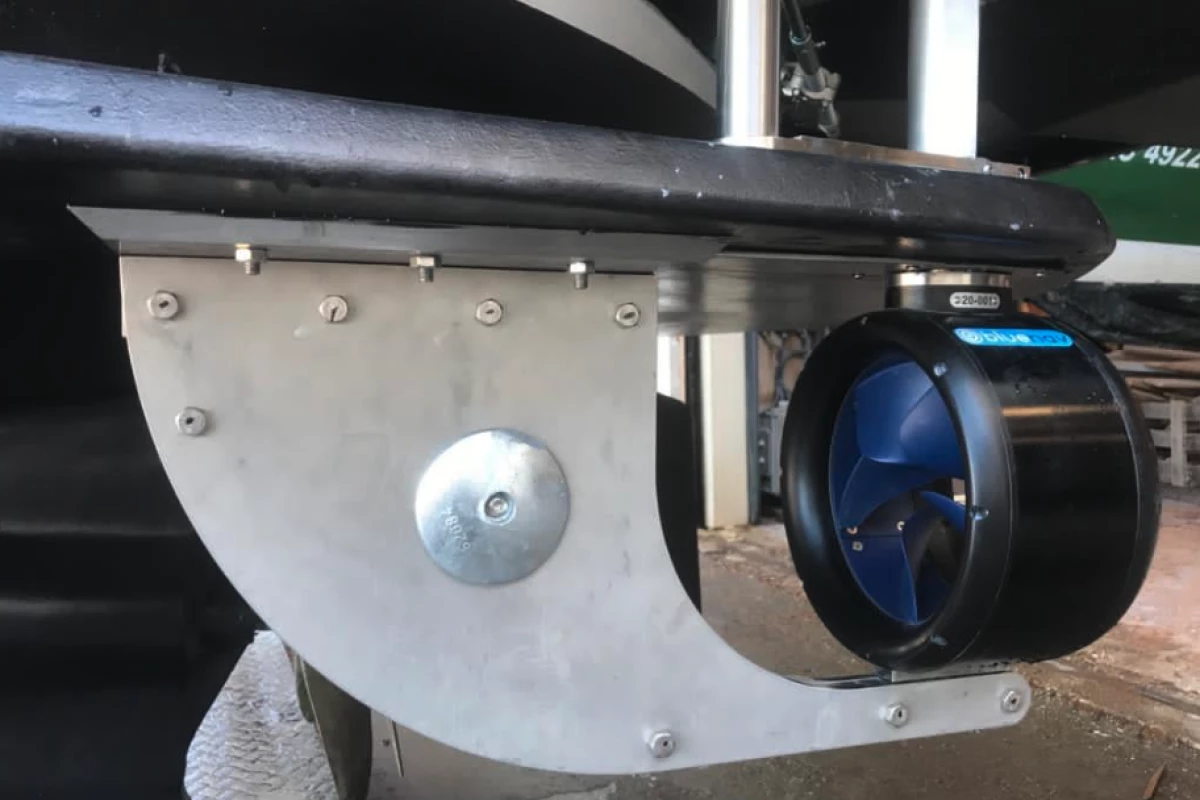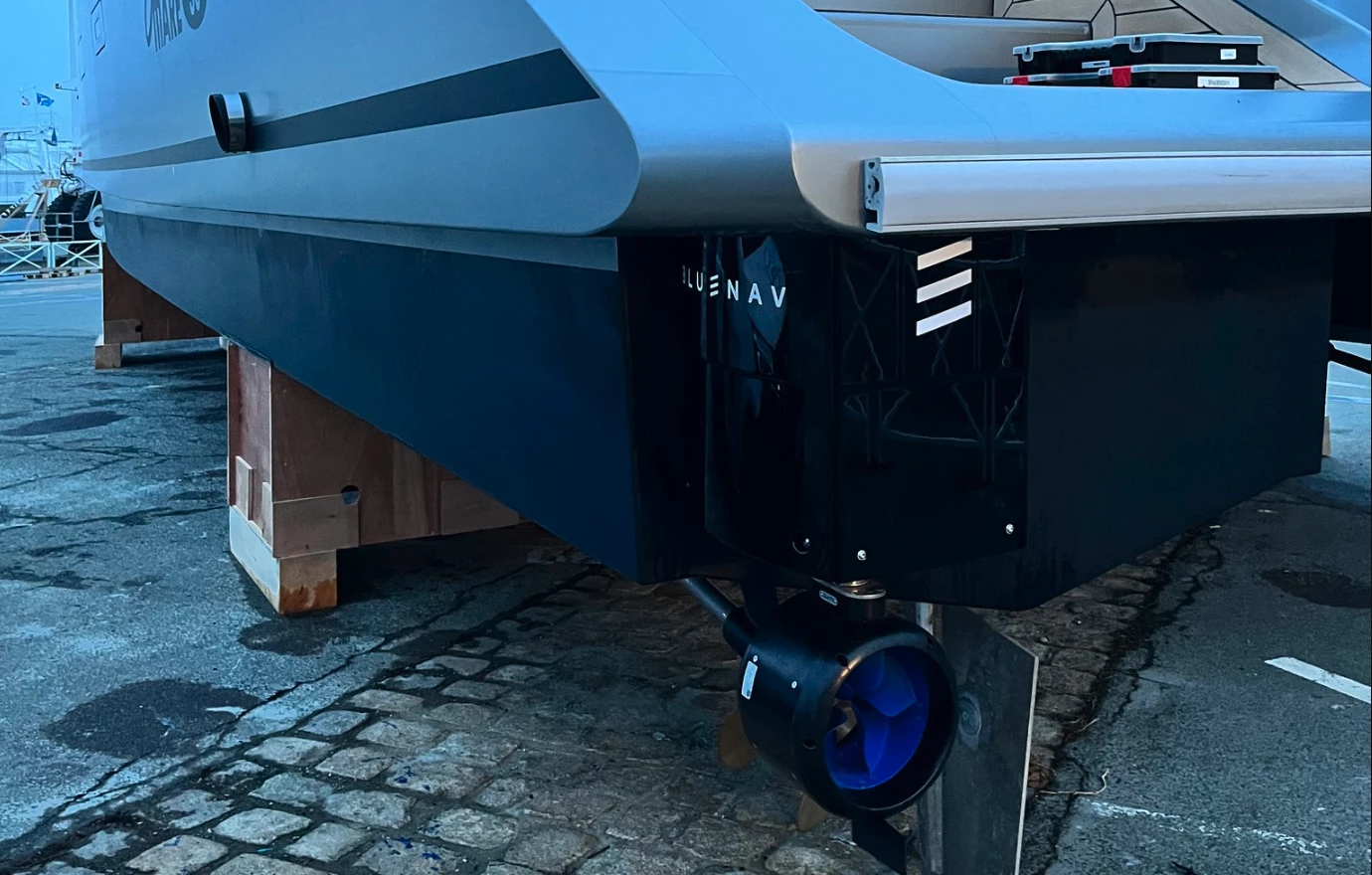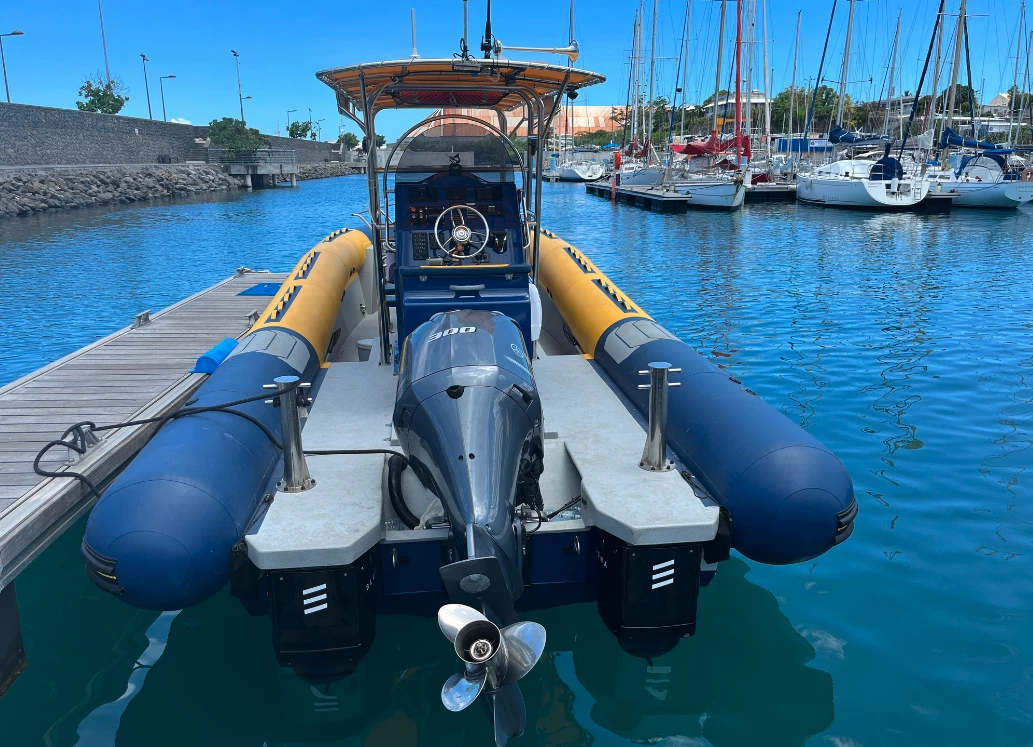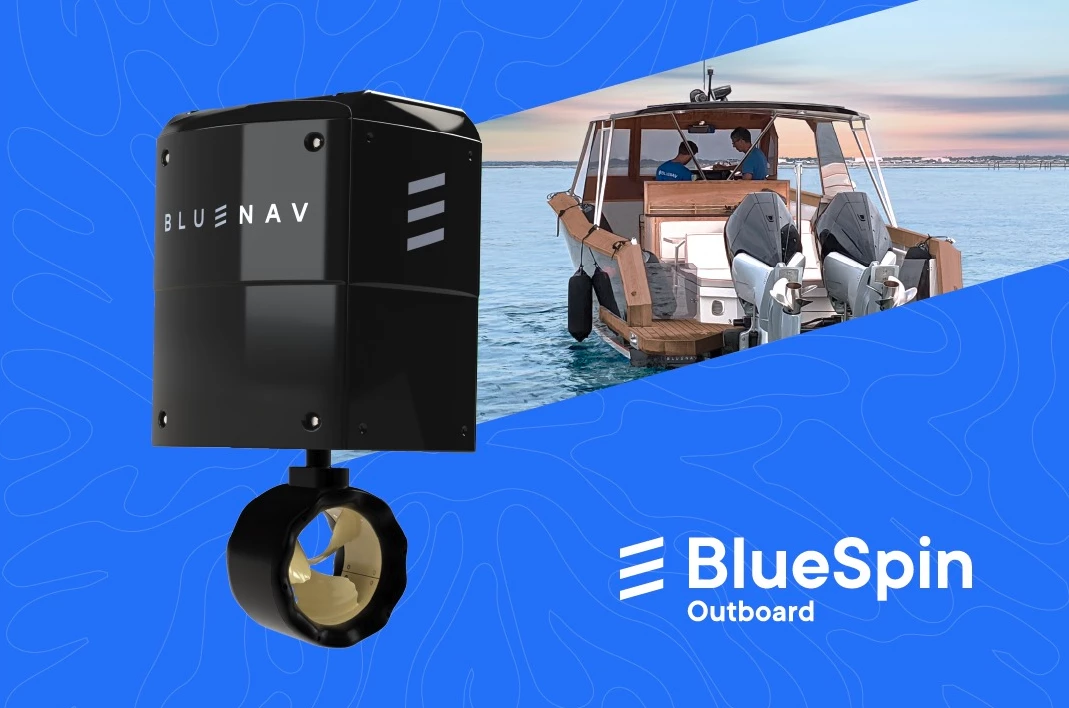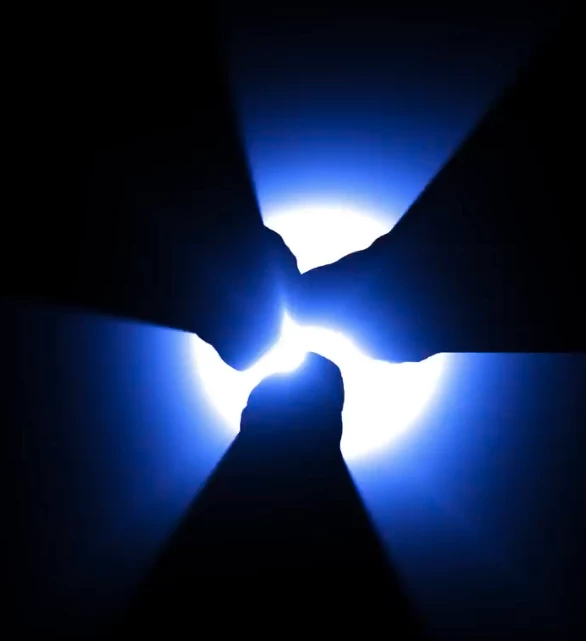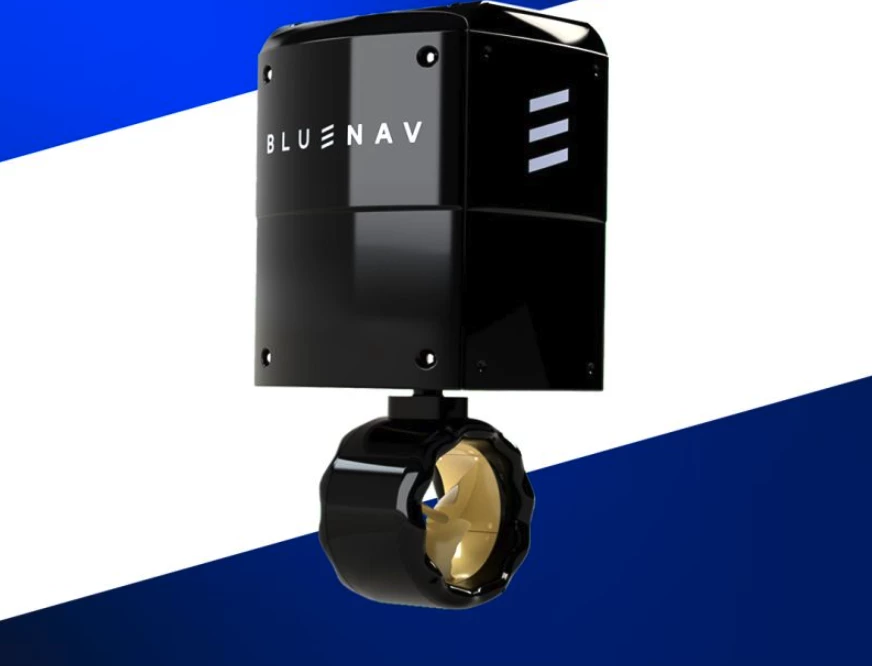French electric marine drive specialist BlueNav is preparing to put a more natural spin in its lineup. The all-new Whale Design propeller features blades that follow the contours of a whale to improve system efficiency. The unique propeller is set to debut in the company's electric outboard and inboard drive systems to further improve upon the efficiency and versatility they add to existing boats.
Founded in 2020, BlueNav is focused on the gradual electrification of private and commercial boats. In contrast to companies focusing all their energy on pure-electric boating, BlueNav has taken a hybrid tack, developing "BlueSpin" electric propulsion solutions designed to be used in conjunction with a boat's original combustion engine.
The add-on electric propulsion introduces readily available near-silent, zero-emissions electric cruising and an overall reduction in on-water emissions, without giving up the range and power of a combustion engine. The retractable design of the BlueSpin outboard and inboard systems means they can be easily pulled out of the water when the captain wants to proceed in combustion mode. Having an all-electric option is especially valuable for navigating through protected waterways where combustion engines are banned.
BlueNav sums up its approach: "Recognizing the impossible batteries challenge for immediate widespread adoption of electric mobility, BlueNav has focused on bringing today’s mobility to life by developing alternative solutions with hybrid propulsion. Designed for boaters and professional vessels, BlueNav motors allow any type of boat to be converted into a hybrid-electric vessel, today."
In the same way some automakers and drivers believe that hybrid vehicles are a more practical step than pure EVs for emissions-cutting in the short term, BlueNav believes hybrid drives are the best immediate way forward for boats. And having seen years' worth of paltry battery-electric boat ranges, it's hard to find fault in the logic.
As for its latest innovation, BlueNav looked to the humpback whale as a point of inspiration, zeroing in on its flippers. In place of the smooth, slippery edge one might expect to find on a creature of the sea, the humpback's flipper has a very bumpy edge. Bony bumps called tubercles line the flipper's leading edge, and have been found to improve hydrodynamic efficiency by channeling water flow, reducing drag, increasing lift and improving maneuverability.
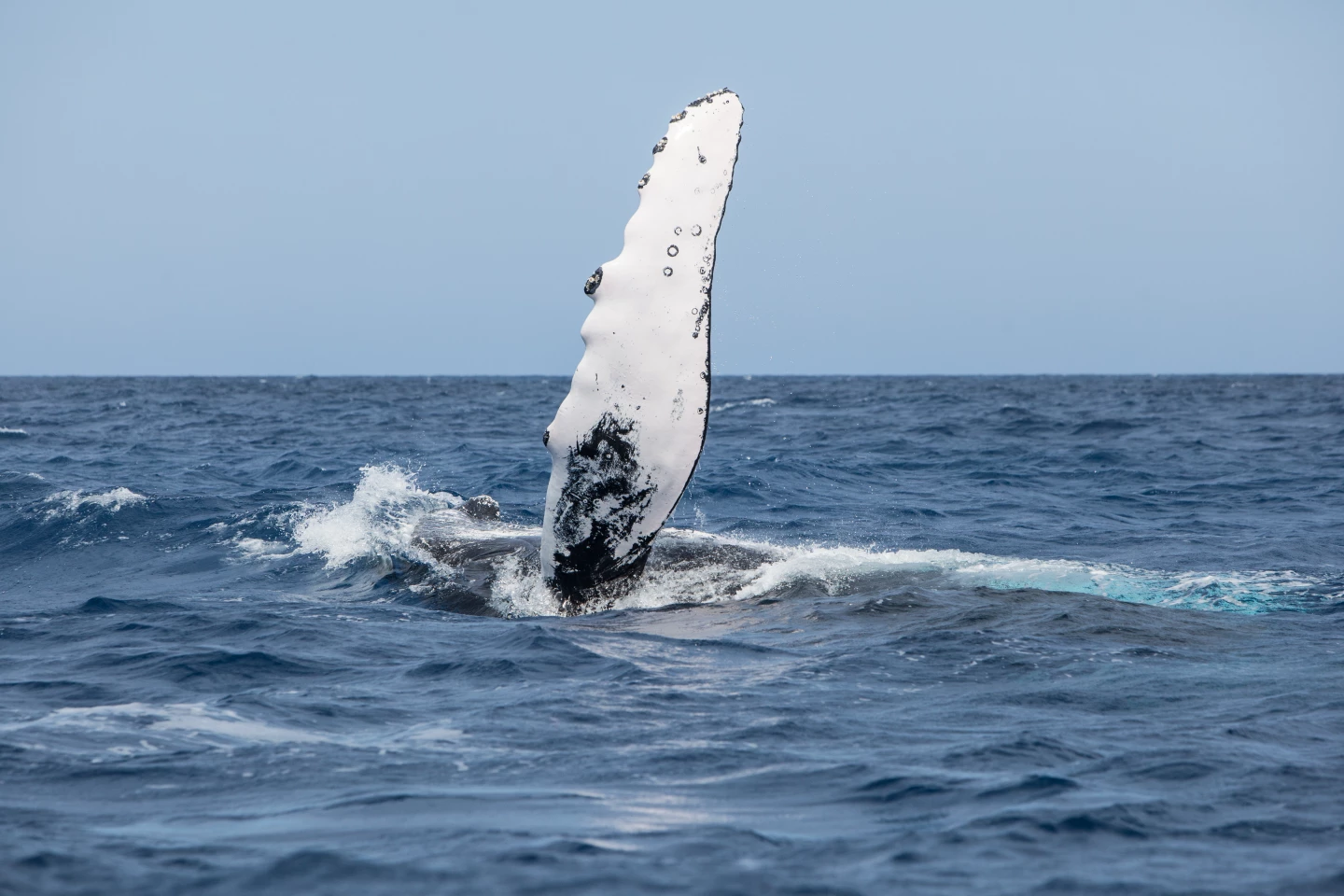
BlueNav's engineering team studied the efficacy of these whale tubercles, and undoubtedly previous propeller work of this vein, and used CAD to apply it to its own propeller design, replacing the smooth leading edge with tubercle-inspired crests. Computational Fluid Dynamics (CFD) was then used to analyze predicted performance over a variety of thrust ratios.
According to BlueNav, the crested blades improve flow around the troughs, changing the pressure and speed of the downstream water and increasing thrust and overall power output. The company has also laid gentle striations in the propeller surface to mimic the low-friction nature of the whale's body, further optimizing performance.
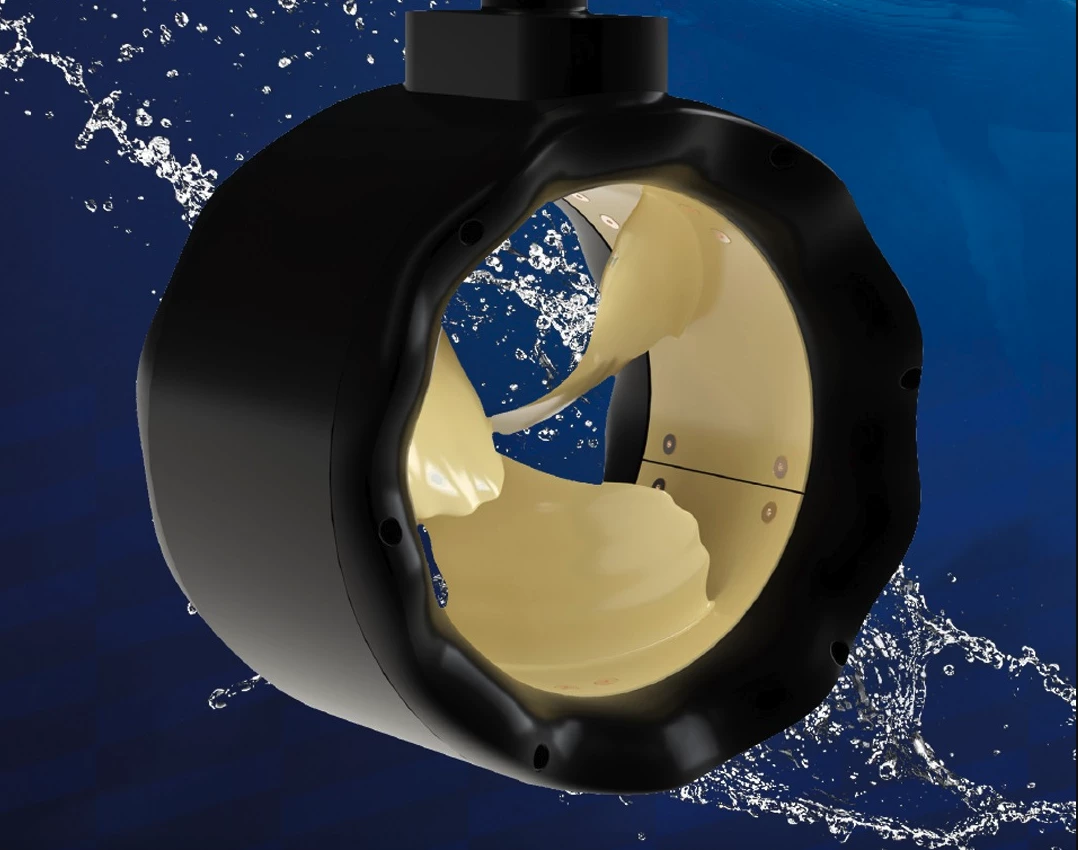
BlueNav developed the Whale Design propeller for integration into its BlueSpin hubless electric prop drives. In place of a common shaft-mounted propeller, the BlueSpin motor places the propeller blades on a magnetically driven inner ring. The company says the design minimizes friction for improved efficiency, operates more quietly, and requires fewer components and less maintenance in comparison to a traditional hub-prop drive. BlueNav offers outboard, in-hull and stationary under-hull configurations to meet the needs of different vessels.
BlueNav revealed the Whale Design at the Düsseldorf boat show in January and plans to begin offering the Whale prop BlueSpin models for order in the coming weeks. It will sell three-, four- and five-blade configurations and tells us the new blades will not tack any additional costs on the price of the BlueSpin drives.
Source: BlueNav
